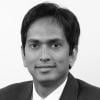Joseph Stiglitz
Former World Bank chief economist, chair of the US President's Council of Economic Advisers, and co-chair of the High-Level Commission on Carbon Prices, Joseph E.
Who is Joseph Stiglitz?
Former World Bank chief economist (1997-2000), chair of the US President's Council of Economic Advisers, and co-chair of the High-Level Commission on Carbon Prices, Joseph E. Stiglitz is a Nobel laureate in economics and currently a University Professor at Columbia University.
He was the principal author of the 1995 IPCC Climate Assessment and is a member of the Independent Commission for the Reform of International Corporate Taxation.
Joseph Stiglitz’s Life and Career
Joseph Stiglitz is a New Keynesian economist from the United States. His work on information asymmetry, risk aversion, and monopolistic competition has earned him acclaim.
Measuring What Counts: The Global Movement for Well-Being and Rewriting the Rules of the European Economy: An Agenda for Growth and Shared Prosperity are two of Stiglitz's works.
Joseph Stiglitz was born in Gary, Indiana, on February 9, 1943. In 1964, he graduated from Amherst College and became a Fulbright scholar at the University of Cambridge, where he worked as a research fellow. In 1967, Stiglitz received his Ph.D. from the Massachusetts Institute of Technology.
He's taught at Stanford, Princeton, and MIT, among other places.
Stiglitz was the chair of the President's Council of Economic Advisers under President Clinton (CEA.) From 1997 to 2000, he served as the World Bank's top economist and senior vice president.
"For their analysis of markets with asymmetric knowledge," Joseph Stiglitz, George Akerlof, and Michael Spence won the Nobel Prize in Economics in 2001. Stiglitz focused on the insurance sector as an example of a market with asymmetric information.
Stiglitz and colleague Michael Rothschild began their study in 1976 with the plausible premise that people buying insurance are more knowledgeable about their relevant qualities than the insurance companies offering it.
They then demonstrated that it would be in the insurance company's best interests to "sort" its clients by risk category by providing a wide selection of insurance products and allowing consumers to choose for themselves.
Healthy clients would be attracted to a low-premium, high-deductible health insurance policy, whereas unhealthy customers would be turned off. Customers who are sick are more inclined to get high-premium, low-deductible coverage.
According to the authors, the market would then lead to a "separating" equilibrium, in which people's risk categories determined the type of insurance they bought.
Stiglitz and Rothschild also demonstrated that there are specific circumstances in which there will be no equilibrium, and the market will cease to exist.
Stiglitz observed that information asymmetry applies to various economic activities, not just insurance transactions.
Information Asymmetries
In certain transactions between a seller and a buyer, asymmetric information exists, allowing one party to take advantage of the other. For example, this is frequently the case when an object is sold.
For instance, if a homeowner wanted to sell their home, they would know more about the property than the buyer.
They may be aware that particular floors are squeaky, that the home is too cold in the winter, or that the neighbors are boisterous, which the buyer would not be aware of until after the purchase.
If the buyer had known this information beforehand, they may have felt they overpaid for the house or would not have bought it.
As applied to any commercial trade, asymmetric information can also be considered specialization and division of expertise. Physicians, after all, have substantial medical school education backgrounds that their patients do not.
Architects, teachers, police officers, attorneys, engineers, fitness instructors, and other qualified professionals are all subject to this premise. As a result, asymmetric knowledge is frequently helpful to an economy and society to enhance efficiency.
It's not always a terrible thing to have asymmetric information. A healthy market economy seeks to increase information asymmetry. Workers who aspire to become more specialized in their chosen fields become more productive and, as a result, may provide more value to workers in other sectors.
Asymmetric information can have near-fraudulent effects in some cases, such as adverse selection, when an insurance company faces the potential of excessive loss due to a risk that was not disclosed at the time of the policy's sale.
One party can retaliate for contract breaches in specific asymmetric information models, whereas the other cannot.
Risk Aversion
The term "risk-neutral" refers to a person's approach to evaluating investment options by focusing purely on prospective rewards, regardless of risk. That may seem counterintuitive—evaluating compensation without taking into account risk appears inherently dangerous.
Nonetheless, when presented with two investment options, the risk-neutral investor considers only the possible rewards of each and ignores the potential downside risk. The risk-averse investor will forego the chance of a high profit in favor of safety.
Savings accounts, certificates of deposit (CDs), and dividend-growth stocks are traditional investments for risk-averse investors. All of the above nearly ensures that the money invested will be available when the investor wants to withdraw it.
Dividend growth stocks vary in value just like any other stock. Nonetheless, they have two distinguishing characteristics: they are stocks in well-known companies that have a proven track record of success.
Conservative investors are a term used to describe risk-averse investors. Many people are unwilling to tolerate volatility in their financial portfolios due to nature or circumstances. Instead, they want their investments to have a high level of liquidity.
That is, when consumers are ready to withdraw money, all of the cash must be available. So waiting for the markets to rebound isn't essential.
Risk-averse investors are more prevalent among elderly investors and retirees. They may have built up a savings account over a long period.
Stiglitz's research with Carl Shapiro on "efficiency wages" is another key contribution to the economics of asymmetric knowledge.
The underlying assumption is that firms may choose to offer employees a higher wage than they would otherwise to urge them not to miss work.
If wages are fixed, so there is no unemployment, a worker fired for shirking can find another job at the same pay elsewhere. As a result, firms set higher wages.
Each company wants to hire fewer people for a higher salary because more people choose to work for a higher wage than a lower one. Even in the long run, unemployment is a result.
Why pay efficient wages?
Economists have now devised several incentives for companies to give their employees higher efficiency wages. Among the most common are:
- Employee turnover is reduced because higher compensation deters workers from quitting. This is especially crucial if acquiring and training new employees takes a long time and costs money.
- Increase morale: Similarly, an efficient wage can keep employees happier and reduce the number of disgruntled employees who can lower morale and hinder output.
- Increased productivity: Higher salaries result in more productive employees who generate more things per hour and put in more effort. Due to this pay, shirking (being lazy on the job) and absenteeism are also reduced.
- Attract and retain skilled workers: While unskilled people may be seen as replaceable by management, highly skilled workers are frequently in higher demand and short supply.
Higher-paid employees are more likely to be loyal to their employer and are less likely to steal or undercut the company's bottom line.
Stiglitz has also contributed to the field of optimal taxation theory. He demonstrated in 1978, for example, that an estate tax would increase rather than diminish income disparity under reasonable assumptions.
His main argument is that the estate tax will reduce savings, resulting in a lower capital-to-labor ratio, raising the return on capital and, under certain assumptions, increasing the amount of income going to capital. Increased income inequality will result if capital is allocated more unequally than labor.
What is optimal taxation?
Maximizing wealth is the most fundamental goal of economic and fiscal policies. This aim has a lot of sub-goals, like ensuring stability, growth, efficient resource allocation, and equitable income distribution.
The primary fiscal weapon to achieve the objectives in question is taxation. What sort of taxation serves the purpose of wealth maximization is discussed in the literature, notably in the framework of "Optimal Taxation" theory, among the tax applications that are changing and increasing state comprehension.
While optimal taxation theory views taxes as valuable tools in ensuring resource allocation in classical welfare economics, modern welfare economics' concept of utility measurement and the difficulties of interpersonal comparisons drive economic attention to shift to Pareto efficiency.
This situation centered on the substitution effect of taxes, which resulted in efficiency losses and persisted until James Mirrlees' work aimed to resolve the equality and efficiency conflict.
In this sense, optimal taxation represents society's choices for equality and efficiency with competing aims and starts with social wealth maximization.
Within this framework, a compromise between the goals of tax fairness (equality) and economic efficiency is attempted. On the other hand, the trade-off between these objectives resulted in various approaches to the subject.
For the essential trade-off to exist, distortionary taxes must have an impact. In today's society, income redistribution can be achieved with distortionary taxes because the government has asymmetrical knowledge of an individual's social and economic characteristics.
The state can only ensure income fairness by sacrificing economic efficiency through distortionary taxes. As a result, optimum taxation prioritizes tax subject, rate, and base to minimize efficiency losses while securing a particular amount of tax revenue.
For a long time, Stiglitz has been a critic of free markets, primarily due to the information asymmetries that exist in many marketplaces.
Stiglitz regularly called for government intervention to correct market failings, but his explanations were always "possibility theorems." He showed how the government could improve markets but never discussed the incentives that would encourage officials to do so.
Joseph Stiglitz Awards and accolades
For his contributions to economics, Joseph Stiglitz has gained widespread acclaim. Joseph E. Stiglitz was awarded the John Bates Clark Medal in 1979, granted to economists under the age of forty who have made significant contributions to the field of economic sciences in the United States.
For his contribution to the theory of information asymmetry, he was awarded the Nobel Prize in Economics in 2001. In addition, as a member of the Intergovernmental Panel on Climate Change, he shared the Nobel Peace Prize in 2007.
In 2009, the president of the United Nations elevated Stiglitz to the Pontifical Academy of the Social Sciences and made him chair of the United Nations Commission on Reforms of the International Monetary and Financial System.
In 2011, Time magazine named Stiglitz one of the "100 Most Influential People in the World," and he was elected president of the International Economic Association in the same year.
Stiglitz sits on the boards of the Acumen Fund and Resources for the Future, among others.
Joseph Stiglitz questioned the international financial community's policies. At the World Bank, the International Monetary Fund, and the US Treasury Department, Stiglitz chastised the conventional knowledge that controlled policymaking.
His views on the failure of shock treatment, transition economics, and the limits of capital market liberalization were among the themes discussed in his speeches.
Stiglitz has been a key figure in the Institute for New Economic Thinking (INET) development since the 2008 financial crisis, which aims to reform the economic discipline so that it is better suited to address the enormous challenges of the twenty-first century.
Hence, Joseph Stiglitz is a well-known economist credited with coining the term "information economics." His insights on information asymmetry, risk aversion, and other topics have led to the development of instruments that are utilized by industry and policymakers.
Researched and authored by Rhea Rose Kappan | LinkedIn
Free Resources
To continue learning and advancing your career, check out these additional helpful WSO resources:




or Want to Sign up with your social account?